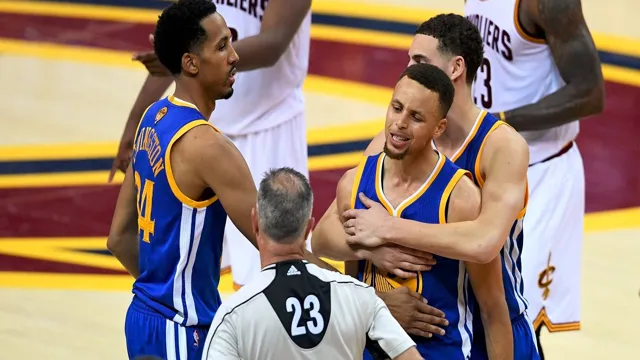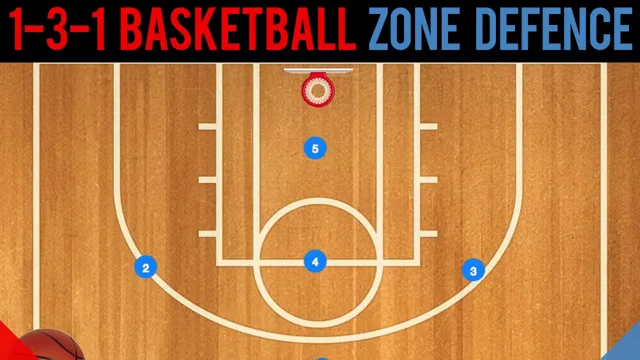Getting ejected from a basketball game can be a shocking experience, especially for those who have never experienced it before. It can feel like a sudden and harsh punishment – one moment you’re playing, and the next you’re being escorted off the court. But the consequences of basketball ejection extend far beyond mere embarrassment.
In fact, being ejected from a game can have serious repercussions, not only for the players involved but for the team as a whole. So what exactly are the consequences of basketball ejection, and how can they impact the game? In this blog, we’ll explore the aftermath of a basketball ejection and shed some light on what players and teams can expect when a player is ejected from the court.
What is Basketball Ejection?
Basketball ejection is a penalty that occurs when a player is removed from the game by the referees for committing a serious offense. This can include behaviors such as intentional fouling, unsportsmanlike conduct, or excessive arguing with the officials. Ejection is a severe consequence that impacts both the player and their team, as the player must leave the court and cannot return for the remainder of the game.
Additionally, the team may suffer from a loss of morale and momentum when a key player is ejected, potentially harming their chances of winning. In some cases, ejections may also lead to additional disciplinary action or fines. It is important for players to maintain composure on the court and avoid engaging in behaviors that could result in their ejection.
Explaining the Professional Rules and Regulations
Basketball ejection is a penalty that is imposed on players or coaches who violate the professional rules and regulations. It occurs when a player or coach commits a severe foul, displays unsportsmanlike behavior, or repeatedly violates the rules. An ejection means that the player or coach is banned from participating in the current game and may be subject to further disciplinary action.
Being ejected can have serious consequences for the player, their team, and the game’s outcome. It can damage the team’s morale, result in a loss of points or opportunities to score, and ultimately impact their chances of winning. Therefore, it is critical for players and coaches to follow the rules and conduct themselves in a professional manner at all times.
Basketball ejection is a stern reminder that in every profession, there are consequences for breaking the rules, and basketball is no exception.

Impact on Player’s Performance and Team’s Score
Basketball ejection is a term used to describe a situation whereby a player is forcefully removed from a game by the referee due to a series of unsportsmanlike conduct or flagrant fouls. It is not a good situation for any team, as it drastically impacts the performance of the player and ultimately affects the team’s score. The moment a player receives an ejection, their team has to finish the game without them, leading to less ball movement, lower points scored, and depleted energy among other members.
The psychological impact of having a player ejected can also be detrimental to the team’s morale, causing them to lose concentration and momentum. It is crucial that players maintain composure during a game and avoid any conduct that could lead to ejection. Teams must also strategize and create contingency plans in case of such eventualities, ensuring that the impact of a player’s ejection is minimal.
Overall, basketball ejections can cost a team a victory if they are not handled correctly.
Types of Basketball Ejection
Basketball ejection can occur for a variety of reasons during a game, and it is important for players to understand the types and consequences of ejection. Two types of ejection are commonly seen in basketball: flagrant fouls and technical fouls. A flagrant foul involves excessive and unnecessary physical contact with an opponent and can result in immediate ejection from the game.
A technical foul is given for unsportsmanlike conduct such as arguing with an official, disrespecting opponents or excessively celebrating a play. While a technical foul is not an automatic ejection, if a player gets two technical fouls in the same game, they are ejected. The consequences of an ejection are severe, with suspended playtime for one or more games and the possibility of fines or penalties for repeat offenders.
It is important for basketball players to keep a level head during games, avoid unnecessary physical or verbal conduct, and maintain respect for the referees and other players to reduce the risk of ejection.
Personal Fouls and Technical Fouls
Basketball ejections are the ultimate form of punishment for players who break the rules during a game. There are two types of ejections in basketball: personal fouls and technical fouls. Personal fouls occur when one player makes physical contact with another player in a way that violates the rules of the game.
These types of ejections are usually reserved for serious offenses, such as elbowing, tripping, or charging into another player. Technical fouls, on the other hand, are handed out when a player violates the game’s non-contact rules. This could be anything from arguing with the referee or using foul language to taunting other players or excessive celebrating.
Technical fouls are often given out more frequently and can lead to multiple ejections throughout a player’s career. It’s important for players to be aware of the consequences of breaking the rules, as ejections not only hurt their team’s chances of winning, but can also result in fines and suspensions.
Referee’s Decision and Video Replay Review
When it comes to basketball ejections, there are two main types: automatic and discretionary. Automatic ejections occur for certain types of fouls, such as flagrant fouls and technical fouls. Flagrant fouls are those that are considered particularly violent or unnecessary, while technical fouls usually involve unsportsmanlike behavior such as arguing with the referee or taunting opponents.
Discretionary ejections, on the other hand, are up to the referee’s judgment. These can occur for a variety of reasons, such as players repeatedly committing fouls or engaging in physical altercations with opponents. It’s worth noting that video replay review can sometimes factor into the decision to eject a player.
Overall, while ejections aren’t a common occurrence in basketball, they can have a significant impact on a game’s outcome and the team’s overall performance. So players must be mindful of their actions on the court to avoid running afoul of the referees.
Extreme Cases: Fighting and Unsportsmanlike Conduct
When it comes to extreme cases in basketball, fighting and unsportsmanlike conduct can lead to a player’s ejection. There are different types of basketball ejections depending on the severity of the incident. A player may receive a technical foul for minor infractions such as arguing with the referee or excessive celebrating.
If a player accumulates two technical fouls, they are ejected from the game. A flagrant foul, on the other hand, is a more serious offense that can result in an automatic ejection. This includes any unnecessary or excessive contact with an opponent, especially if it is deemed hostile or violent.
In the most extreme cases, a player may even be ejected from the league for repeated unsportsmanlike conduct or physical altercations. It’s crucial that players maintain their composure and uphold the integrity of the game, as any form of violence or unsportsmanlike behavior not only harms the other players but also tarnishes the sport’s reputation.
Preventing Basketball Ejection
Basketball ejection can be prevented with proper discipline, communication, and respect. Players need to understand the importance of following the rules and respecting their opponents, teammates, and officials. Coaches can also play a crucial role in preventing ejections by promoting fair play and emphasizing the consequences of unsportsmanlike conduct.
It’s essential to address any conflicts or issues that arise immediately and impartially, de-escalating tensions before they lead to ejections or other negative outcomes. Players can also learn strategies for managing their emotions, such as taking deep breaths, counting to ten, or walking away from a situation before it escalates. By working together and practicing good sportsmanship, basketball teams can prevent ejections and create a positive and respectful environment that benefits everyone involved.
Emphasizing Sportsmanship and Respect for Authority
Preventing basketball ejection is an important part of emphasizing sportsmanship and respect for authority in the game. It’s understandable to get caught up in the heat of the moment, but it’s important to remember that every decision made on the court should be done with respect for the rules and the referees. One way to prevent ejection is to practice mindfulness on the court.
Take a deep breath before reacting to a call and try to see the situation objectively. Another way is to simply be kind to the referees. Remember that they’re human too and doing their best to make fair calls.
Treat them with respect and they’re more likely to view you in a positive light. Ultimately, preventing basketball ejection requires discipline and a commitment to playing the game with integrity. It may be easy to lose your cool, but the true test of a player’s character is how they handle challenging situations with grace and respect.
Effective Communication and Conflict Resolution Techniques
Basketball ejections can be prevented through effective communication and conflict resolution techniques. When emotions are running high during a game, tempers can flare and players may engage in aggressive behavior that could lead to an ejection. However, coaches, referees, and team captains can all work together to prevent this outcome.
One technique is to use active listening, which means really hearing and understanding the concerns and perspectives of all parties involved. Coaches and captains can also set clear expectations and boundaries early on, making it clear that aggressive behavior will not be tolerated. Additionally, using positive language and focusing on solutions rather than blaming individuals can help de-escalate conflicts before they get out of hand.
By taking proactive steps and communicating effectively, basketball ejections can be avoided and players can stay focused on playing their best game.
Conclusion
In basketball, an ejection is like a technical foul on steroids. It’s the ultimate penalty for a player who has committed a heinous act on the court. Whether it’s a flagrant foul or a heated argument with a ref, getting ejected means you’re out of the game, and potentially facing further disciplinary action from the league.
So, when you hear the term “basketball ejection,” just know that it’s not something that happens lightly. It’s a serious consequence for serious transgressions, and a reminder that even in the fast-paced world of basketball, actions have consequences.”
FAQs
What does it mean to be ejected from a basketball game?
Being ejected from a basketball game means that a player, coach, or another member of the team has been removed from the game by a referee due to committing a serious violation or misconduct.
What are some common reasons for a basketball ejection to occur?
Some common reasons for a basketball ejection include physical altercations, using profane language, deliberately fouling or injuring another player, repeatedly arguing with referees, or leaving the bench area during a fight.
How does a basketball ejection affect the rest of the game?
Depending on who is ejected, a basketball ejection can have a significant impact on the rest of the game. For example, if a key player or coach is ejected, it can affect the team’s strategy, morale, and ability to win. Additionally, the team may be forced to play with fewer players, which can lead to fatigue and further impact their performance.
Can a basketball ejection result in further disciplinary action?
Yes, depending on the severity of the ejection, it can result in further disciplinary action, such as fines, suspensions, or being banned from future games. This is often determined by the league or governing body of basketball.


